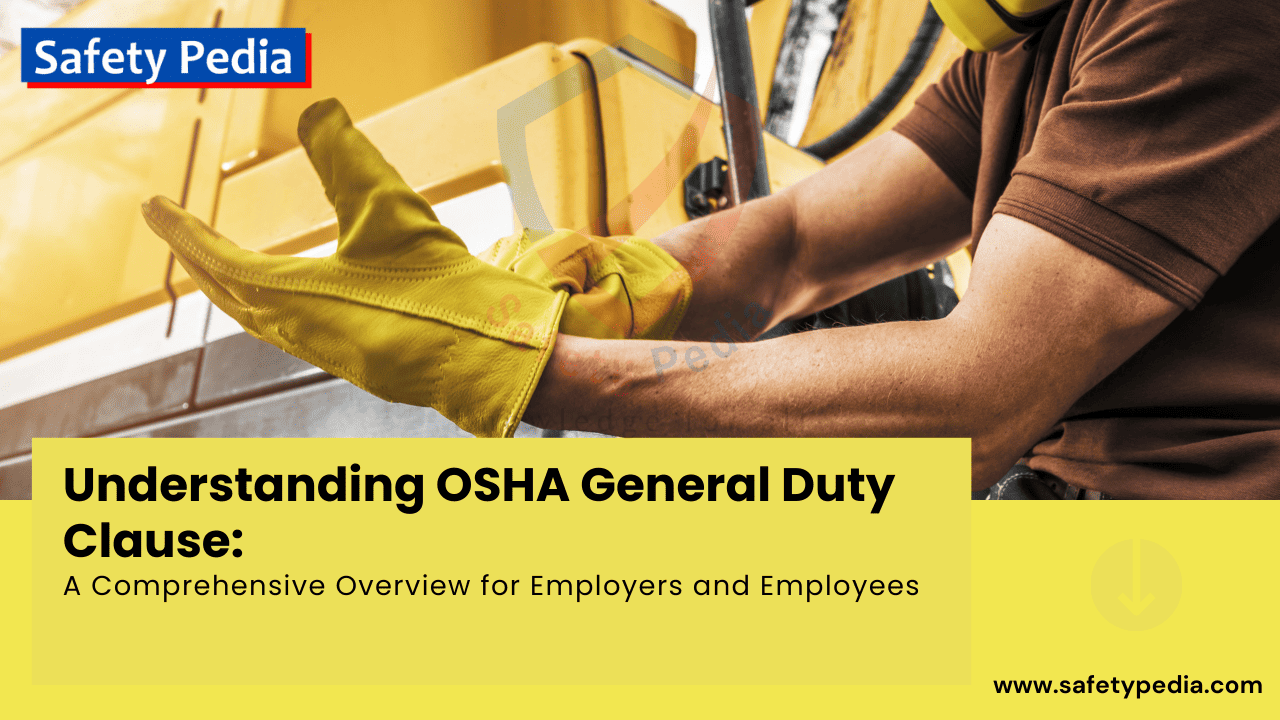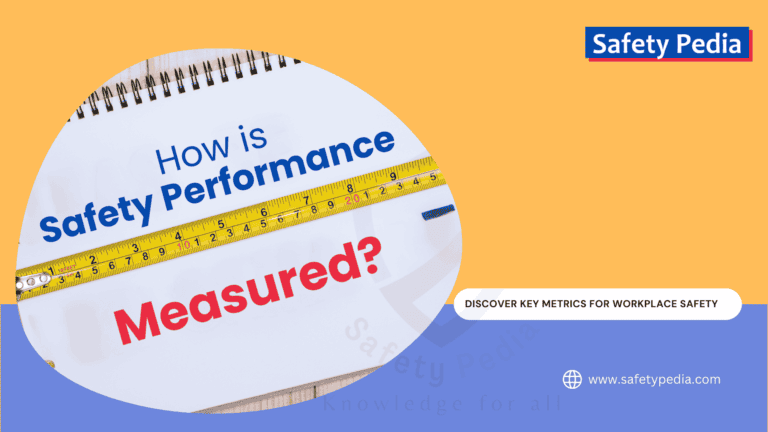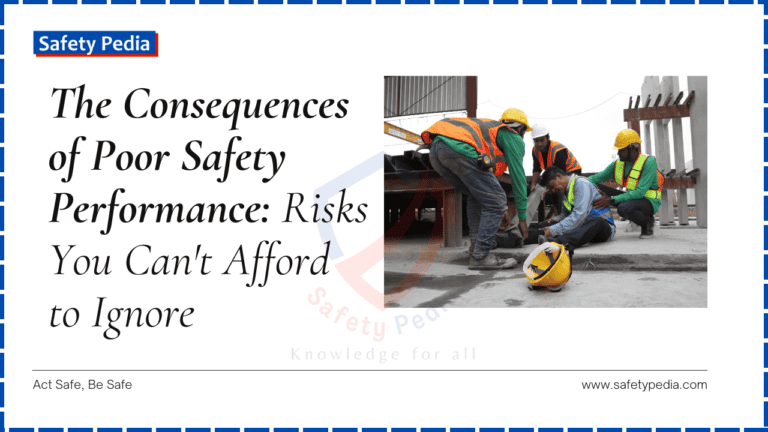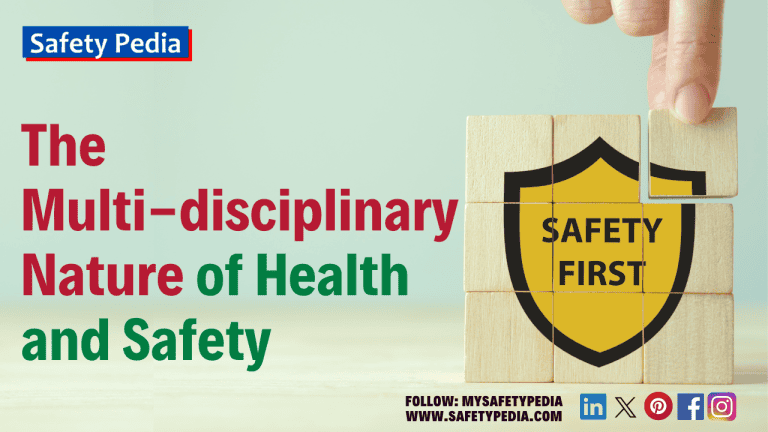
Introduction
Are you an employer or an employee looking to understand the OSHA General Duty Clause? Look no further! In this comprehensive overview, we will explore the important aspects of the General Duty Clause, providing you with the knowledge and insight you need to ensure a safe and healthy workplace.
The Occupational Safety and Health Administration (OSHA) is the governing body responsible for ensuring safe and healthy working conditions in the United States. The OSHA General Duty Clause is a key component of the Occupational Safety and Health Act (OSHA) of 1970, which outlines the employer’s duty to provide a workplace free from recognized hazards that could cause serious harm or death.
The OSHA General Duty Clause, found in Section 5(a)(1) of the Occupational Safety and Health (OSH) Act, is a key provision in their efforts to protect employees from recognized hazards and may not be specifically covered by existing regulations. By providing a general duty for employers to provide a workplace free from serious recognized hazards, the OSHA General Duty Clause covers a wide range of potential risks. It requires employers to keep up-to-date of industry standards, take necessary precautions, and continuously evaluate and address potential hazards.
It mandates employers to provide a hazard-free workplace that is conducive to the well-being of employees. Regardless of industry or size, all employers must comply with this clause and take measures to protect their employees from recognized hazards. By understanding this clause, you can identify potential hazards, implement preventive measures, and mitigate risks.
Throughout this article, we will explore the scope of the General Duty Clause, its requirements, and the consequences of non-compliance. Whether you are an employer striving for compliance or an employee seeking a safe working environment, this article will equip you with the essential knowledge to navigate the OSHA General Duty Clause effectively.
So, let’s dive in and unravel the intricacies of this vital workplace regulation together.
What is the OSHA General Duty Clause?
The OSHA General Duty Clause is a fundamental component of the Occupational Safety and Health Act (OSHA) of 1970, which establishes employers’ responsibility to provide a safe and hazard-free workplace.
The Occupational Safety and Health Administration (OSHA) General Duty Clause, also known as Section 5(a)(1) to (2) and (b) of the Occupational Safety and Health Act of 1970, serves a crucial purpose:
(a) Each employer —
(1) shall furnish to each of his employees employment and a place of employment which are free from recognized hazards that are causing or are likely to cause death or serious physical harm to his employees;
(2) shall comply with occupational safety and health standards promulgated under this Act.
(b) Each employee shall comply with occupational safety and health standards and all rules, regulations, and orders issued pursuant to this Act which are applicable to his own actions and conduct.
The General Duty Clause, found in Section 5(a)(1) of the Occupational Safety and Health (OSH) Act, is a key provision in OSHA’s efforts to protect employees from recognized hazards. It serves as a catch-all regulation, covering workplace hazards not specifically addressed or established by other OSHA standards. It empowers OSHA to hold employers accountable for protecting their workers from:
- Recognized hazards: This refers to a danger that is known to be harmful in the relevant industry or that a reasonable person acting in the circumstances of the employer would recognize as causing a significant risk of death or serious physical harm.
- Causing or likely to cause death or serious physical harm: The hazard must pose a significant risk of serious injury or death to employees for the clause to apply.
- Feasible and useful abatement: Employers must be able to take practical and effective measures to eliminate or control the hazard.
The General Duty Clause is a powerful tool for OSHA to protect workers from a wide range of hazards. While it may not provide specific guidance like a detailed standard, it encourages employers to take proactive steps to ensure a safe and healthy work environment for their employees.
What is the Purpose of the OSHA General Duty Clause?
The purpose of the General Duty Clause is to protect workers from hazards that are not covered by specific OSHA standards. The clause also gives OSHA the authority to enforce safety and health standards that are not yet promulgated or finalized.
- Addresses gaps in specific standards: Many workplaces encounter unique hazards not covered by existing OSHA standards. The General Duty Clause provides necessary protection in these situations.
- Promotes proactive safety: Employers are encouraged to identify and mitigate potential hazards before accidents occur, promoting a culture of safety in the workplace.
- Holds employers accountable: The clause ensures employers cannot neglect essential safety measures simply because their industry lacks specific standards.
Limitations of the General Duty Clause:
- Open to interpretation: Determining whether a hazard falls under the clause can be subjective, often requiring legal proceedings and precedent to clarify.
- Enforcement challenges: Demonstrating an employer’s awareness of the hazard and its ability to prevent harm can be complex, making enforcement sometimes difficult.
- Limited scope: The clause focuses on preventing serious injuries and death, not eliminating all potential risks or addressing less severe health concerns.
Additional Considerations:
- While the General Duty Clause is broad, it does not give OSHA unlimited power. Employers have the right to challenge citations based on the interpretation of the clause and the specific circumstances of the case.
- OSHA often uses the General Duty Clause in conjunction with specific standards to address complex hazards or situations where multiple standards apply.
What are the Requirements of the OSHA General Duty Clause?
The OSHA General Duty Clause is a provision in the Occupational Safety and Health Act of 1970 that requires employers and employees to maintain a safe and healthy work environment. The clause states that:
Employer’s Responsibility
The General Duty Clause places the primary responsibility for workplace safety on the employer. Here are the key requirements for employers:
- Furnish a workplace free from recognized hazards: Employers must identify and assess potential hazards in their workplaces. This includes both physical hazards (e.g., machinery, chemicals, falls) and psychosocial hazards (e.g., workplace violence, harassment). Employers must conduct thorough hazard assessments to identify potential risks in the workplace. This involves analyzing work processes, equipment, and the work environment to determine any hazards that may pose a threat to employees’ health and safety.
- Abate recognized hazards: Once a hazard is identified, the employer must take steps to eliminate or control it to prevent harm to employees. This may involve implementing various measures, such as engineering controls, administrative controls, and providing personal protective equipment (PPE).
- Feasible and useful abatement: The General Duty Clause does not require employers to implement impossible or overly burdensome measures. Abatement methods must be technologically and economically feasible, and demonstrate effectiveness in addressing the hazard.
- Comply with specific standards: When specific OSHA standards exist for a particular hazard, they take precedence over the General Duty Clause. However, the clause can still play a role in addressing aspects of the hazard not covered by the specific standard. Keeping up-to-date of industry standards: Employers are expected to stay updated with industry standards and best practices related to workplace safety. This includes following guidelines and recommendations provided by OSHA, as well as any relevant regulations specific to the industry.
Additionally: Employers must make every effort to identify and mitigate potential hazards that could harm their employees. To fulfill this duty, employers must:
- Train employees: Employers must provide comprehensive training programs to ensure employees are aware of potential hazards, understand proper safety procedures, and know how to use any necessary protective equipment.
- Provide necessary equipment: Employers must provide employees with the necessary tools, equipment, and personal protective gear to perform their jobs safely. This may include items such as safety goggles, gloves, respirators, or other protective clothing.
- Establish safety protocols: Employers should establish clear safety protocols and guidelines to ensure consistent adherence to safety measures. This may involve implementing safety rules, procedures, and emergency response plans to protect employees in the event of an accident or hazardous situation.
Employee’s Responsibility
While employers bear the primary responsibility for workplace safety, employees also have a role to play in ensuring their own well-being. Under the General Duty Clause, employees are expected to:
- Follow safety rules and procedures: Employers are responsible for establishing and communicating safety rules and procedures. Employees must comply with safety protocols established by their employers and follow safe work practices. This includes using personal protective equipment as instructed, reporting any hazards or unsafe conditions, and following established procedures for operating equipment or machinery.
- Report hazards, incidents or unsafe conditions: Employees have the right to report any unsafe conditions or suspected hazards to their supervisor or OSHA. Employees have a duty to report any hazards or incidents they observe in the workplace. This helps employers identify potential risks and take necessary actions to rectify them.
- Use personal protective equipment (PPE): When provided with PPE, employees are responsible for wearing and using it properly.
- Refrain from reckless behavior: Employees should work safely and avoid engaging in reckless or unsafe behavior that could endanger themselves or others.
- Participate in training programs: Employees should actively participate in safety training programs provided by their employers. This includes attending training sessions, asking questions, and seeking clarification on any safety-related concerns.
It’s important to note that both employers and employees share a responsibility for creating and maintaining a safe and healthy workplace. By understanding and fulfilling their respective roles under the General Duty Clause, everyone can contribute to a safer work environment.
Scope and Coverage of the General Duty Clause
The scope of the General Duty Clause is broad and encompasses various aspects of workplace safety. It requires employers to continuously evaluate and address potential hazards to ensure a safe working environment for their employees.
The General Duty Clause covers recognized hazards that may cause serious physical harm or death. These hazards can include anything from exposure to hazardous chemicals or substances, unsafe equipment or machinery, inadequate training, or even workplace violence.
It’s important to note that the General Duty Clause does not require employers to eliminate all risks from the workplace. Instead, it mandates employers to take reasonable steps to address recognized hazards and provide a reasonably safe working environment.
The general duty clause (GDC) of the Occupational Safety and Health Act (OSHA) is a broad and flexible provision that covers situations where there are no specific OSHA standards applicable to the hazard or where the existing standards are inadequate to address the hazard. The GDC applies to all employers covered by OSHA, regardless of the size or type of their business.
The scope and coverage of the GDC are determined by the interpretation and enforcement of OSHA and the courts. OSHA can issue citations for violations of the GDC based on four criteria:
- there is a hazard;
- the hazard is recognized by the employer or the industry;
- the hazard is causing or likely to cause death or serious physical harm; and
- there is a feasible and effective means to eliminate or reduce the hazard.
The courts have upheld OSHA’s authority to use the GDC as a basis for enforcement, but have also imposed some limitations on its application. For example, the courts have ruled that the GDC cannot be used to impose new obligations on employers that are not clearly related to safety and health, or to create stricter standards than those established by OSHA.
The absence of a specific OSHA standard for a particular hazard does not exempt an employer from the General Duty Clause. However, the existence of a relevant standard can provide guidance on how to comply with the clause.
Elements of a General Duty Clause Violation
To prove that an employer has violated the General Duty Clause, OSHA must demonstrate four elements:
- The employer failed to keep the workplace free of a hazard to which employees were exposed.
- The hazard was recognized.
- The hazard was causing or was likely to cause death or serious physical harm.
- There was a feasible and useful method to correct the hazard
Differences between the General Duty Clause and Specific Standards
Both the General Duty Clause and Specific Standards play crucial roles in ensuring workplace safety under the Occupational Safety and Health Act (OSH Act), but they differ in several key ways:
| Differences | General Duty Clause | Specific Standards |
| Scope: | Broad and applies to all workplaces covered by the OSH Act, regardless of industry or size. It covers recognized hazards that cause or are likely to cause serious harm, even if no specific standard exists. | Narrow and focus on specific hazards or activities in particular industries or jobs. They provide detailed requirements and procedures for controlling or eliminating those hazards. |
| Application | Used when no specific standard exists or when a specific standard doesn’t adequately address a recognized hazard. Requires employers to identify, assess, and control hazards based on their own judgment and available resources. | Provide clear and detailed requirements for hazard control, including engineering controls, work practices, and personal protective equipment (PPE). Employers are obligated to comply with all applicable specific standards. |
| Level of detail | Provides general principles; employers have flexibility in choosing feasible control methods. | Often highly detailed; prescribe specific control measures and equipment to be used. |
| Burden of proof | OSHA must prove all four elements of a violation, including awareness of the hazard and feasible solutions. | If a standard is violated, proof of the violation itself establishes non-compliance, simplifying OSHA’s case. |
| Flexibility | More flexibility for employers to adapt control measures to their specific workplaces. | Less flexibility; employers must adhere to the prescribed requirements. |
| Relationship | Covers hazards lacking specific standards. | When a specific standard exists, it must be followed over the General Duty Clause for that hazard. |
| Benefits | Proactive approach, adaptable to emerging hazards. | Clearer expectations, consistency in control measures. |
| Overall | The General Duty Clause provides a broad safety net, while Specific Standards offer detailed guidance for specific hazards. | Both are essential for a comprehensive approach to workplace safety. |
| Examples | Falling hazard from unguarded rooftop (no specific standard for rooftop safety). | Exposure to lead in construction (specific standard with detailed permissible exposure limits and respiratory protection requirements). |
Here are some additional points to consider:
- Some Specific Standards incorporate the General Duty Clause, requiring additional hazard management beyond the standard’s specific provisions.
- The interpretation of both the General Duty Clause and Specific Standards can be subject to legal challenges and ongoing court rulings.
- Employers should consult with safety professionals and legal counsel to ensure compliance with both the General Duty Clause and relevant Specific Standards in their workplaces.
How OSHA Enforces the General Duty Clause
OSHA inspectors use various sources of information to identify and evaluate hazards, such as industry standards, consensus standards, best practices, OSHA guidance documents, and professional literature. OSHA also considers the opinions of experts and the views of employees and their representatives when assessing hazards. OSHA does not issue citations for trivial or hypothetical hazards, but only for those that pose a significant risk to workers’ health and safety.
The Occupational Safety and Health Administration (OSHA) enforces the General Duty Clause through a multi-faceted approach. Here’s a breakdown of their key methods:
- Inspections:
• OSHA can conduct routine inspections of workplaces based on a schedule, complaints, or accidents.
• During inspections, they will look for potential hazards and assess whether appropriate control measures are in place.
• If the inspector identifies a violation of the General Duty Clause, they will issue a citation to the employer. - Complaints:
• Employees, unions, or any concerned party can file a complaint with OSHA about potential safety hazards in their workplace.
• OSHA will investigate the complaint and may conduct an inspection if they find merit in the allegations.
• If a violation is confirmed, the employer may be cited. - Accidents and Fatalities:
• OSHA investigates all workplace fatalities and serious injuries.
• Their investigation may uncover violations of the General Duty Clause if the employer failed to address a recognized hazard that contributed to the incident.
• Depending on the severity of the incident, OSHA may issue citations and potentially pursue criminal charges. - Enforcement actions:
• Once a citation is issued, the employer has the right to contest it or negotiate a settlement with OSHA.
• If the citation is upheld, the employer may face penalties, which can range from warning letters to significant fines.
• In cases of willful or repeated violations, OSHA may also seek court orders to compel the employer to comply with safety requirements. - Collaboration and Consultation:
• OSHA also works collaboratively with employers, labor unions, and safety organizations to promote compliance with the General Duty Clause.
• They offer educational resources, training programs, and consultation services to help employers understand and implement appropriate safety measures.
• This proactive approach encourages voluntary compliance and prevents the need for enforcement actions.
Common violations of the General Duty Clause
Failure to comply with the General Duty Clause can result in serious consequences for employers. Some common violations of the General Duty Clause include:
- Lack of hazard assessments: Employers may be in violation if they fail to conduct proper hazard assessments to identify potential risks in the workplace.
- Inadequate preventive measures: Employers can be found in violation if they do not implement appropriate preventive measures to address recognized hazards. This includes failing to provide necessary protective equipment or neglecting to establish safety protocols.
- Ignoring industry standards: Employers who do not stay updated with industry standards and fail to follow OSHA guidelines may be in violation of the General Duty Clause.
Here are some common examples of violations that OSHA has cited under the General Duty Clause:
1. Ergonomic hazards:
- Lack of proper ergonomic design or adjustments for workstations, leading to musculoskeletal disorders (MSDs) like back pain, carpal tunnel syndrome, and tendinitis.
- Failure to provide adequate rest breaks or job rotation for tasks involving repetitive motions or heavy lifting.
2. Slip, trip, and fall hazards:
- Unaddressed wet or greasy floors, uneven surfaces, or clutter in walkways.
- Insufficient lighting or inadequate handrails on stairs.
- Improper use or maintenance of ladders and scaffolding.
3. Workplace violence:
- Failure to implement measures to prevent or mitigate workplace violence, such as inadequate security, lack of training, or ineffective reporting procedures.
- Inadequate policies for dealing with threats, harassment, or aggressive behavior.
4. Heat stress or cold stress hazards:
- Lack of measures to protect employees from extreme heat or cold, such as providing adequate water, shade, or rest breaks in hot environments, or providing proper insulation and warming equipment in cold environments.
- Failure to implement engineering controls or provide personal protective equipment (PPE) to mitigate heat exposure.
5. Respiratory hazards:
- Exposure to airborne contaminants like dust, fumes, vapors, or gases without adequate ventilation, respiratory protection, or engineering controls.
- Lack of proper training on respiratory hazards and the use of PPE.
6. Electrical hazards:
- Improper wiring, faulty equipment, or inadequate safeguards for electrical work.
- Failure to provide appropriate training on electrical safety or enforce lockout/tagout procedures.
7. Confined space hazards:
- Inadequate procedures for entering, working in, and exiting confined spaces, such as tanks, silos, or manholes.
- Lack of proper ventilation, atmospheric testing, or rescue equipment for confined spaces.
8. Unsafe machine guarding:
- Unguarded or inadequately guarded machinery parts that could cause injuries.
- Failure to provide appropriate training on machine safety and lockout/tagout procedures.
9. Inadequate fall protection:
- Lack of fall protection for workers at heights, such as unguarded edges, unprotected skylights, or improper use of scaffolding or ladders.
- Failure to provide proper training on fall prevention and the use of fall protection equipment.
10. Hazardous chemical exposure:
- Failure to implement proper handling, storage, labeling, and disposal procedures for hazardous chemicals.
- Lack of adequate training on chemical hazards and the use of PPE.
11. Insufficient training and instruction:
- Failure to provide employees with adequate training on workplace hazards, safe work practices, and emergency procedures.
- Lack of proper instruction on the use of tools, equipment, and PPE.
Some other violations of the General Duty Clause
- Failing to implement adequate measures to prevent exposure to infectious diseases, such as COVID-19, tuberculosis, or hepatitis.
- Failing to provide adequate ventilation, lighting, temperature control, or noise reduction in the workplace.
- Failure to provide adequate rest breaks or job rotation for tasks involving repetitive motions or heavy lifting.
- Failing to protect employees from falls, electrocution, fire, explosion, or other hazards that may arise from the use of machinery, equipment, or materials.
- Failing to train employees on how to recognize and avoid hazards, how to use personal protective equipment (PPE), or how to respond to emergencies.
- Failing to enforce safety rules and policies, or to discipline employees who violate them.
- Failing to correct known hazards or to comply with OSHA standards or regulations.
Remember: OSHA can cite employers for General Duty Clause violations even if no specific standard exists for the hazard, as long as the hazard is recognized and could cause serious harm. It’s crucial for employers to proactively identify and address potential hazards to ensure a safe and healthy workplace.
Consequences of non-compliance with the General Duty Clause
Non-compliance with the General Duty Clause can have severe consequences for employers. OSHA may issue citations, penalties, or even initiate legal action against non-compliant employers. Additionally, failure to comply with the General Duty Clause can result in workplace accidents, injuries, or even fatalities.
Important Court Cases and Interpretations
Here are two important Court Cases and their interpretations on the violation of the General Duty Clause:
An important court case on the violation of the General Duty Clause is Acme Energy Services v. Secretary of Labor, No. 08-0088 (OSHRC 2012). In this case, the Occupational Safety and Health Review Commission affirmed an OSHA citation issued to Acme Energy Services, a drilling company, for failing to protect its employees from being struck by a drill pipe that was being hoisted by a crane. The Commission held that Acme violated the General Duty Clause by not following the industry standards for safe rigging practices, such as using tag lines and keeping a safe distance from the load.
Another important court case on the violation of the General Duty Clause is Otis Elevator Co., 21 BNA OSHC 2204 (No. 03-1344, 2007). In this case, the Occupational Safety and Health Review Commission affirmed an OSHA citation issued to Otis Elevator Co., an elevator manufacturer, for failing to protect its employees from the hazard of falling objects during elevator installation. The Commission held that Otis violated the General Duty Clause by not following the industry standard ANSI A17.1, which required the use of protective canopies or equivalent means to shield workers from falling objects.
Secretary of Labor v. A. H. Phillips, Inc. (1978), this case involved a construction company, A. H. Phillips, Inc., that was cited for violating the General Duty Clause after an employee fell to his death from an unguarded edge of a building under construction.
The Occupational Safety and Health Review Commission (OSHRC) held that the General Duty Clause is applicable when a recognized hazard exists, and feasible means of abatement are available. In this case, the lack of fall protection was considered a recognized hazard, and feasible means of abatement were deemed to be guardrails or personal fall arrest systems. The case reinforced the responsibility of employers to address recognized hazards even if there were no specific OSHA standards for the particular hazard.
Secretary of Labor v. Martin & Bayley, Inc. (2005), in this case, a convenience store chain, Martin & Bayley, Inc., was cited for a General Duty Clause violation after an employee was fatally injured in a robbery. The OSHRC emphasized that the General Duty Clause requires employers to protect employees from recognized hazards that are causing or likely to cause death or serious physical harm. In this context, the recognized hazard was the risk of violent crime, and the feasible means of abatement included implementing security measures. The case highlighted that employers have a duty to address workplace violence risks under the General Duty Clause, even if there are no specific OSHA standards related to this hazard.
Whirlpool Corp. v. Marshall (1978), Workers suffered from ergonomic disorders due to repetitive motions on an assembly line. OSHA cited the employer for violating the General Duty Clause, arguing they failed to provide a safe work environment. The Court upheld OSHA’s citation, finding that ergonomic hazards could fall under the General Duty Clause, even if no specific standard existed. This established the clause’s potential application to less traditional physical hazards.
Preemption Principle in OSHA’s General Duty Clause
West Virginia v. Allegheny Energy Supply Co. (1999), a worker died after falling from an unguarded catwalk. OSHA cited the employer for violating the General Duty Clause, arguing they failed to provide fall protection. The Supreme Court ruled in favor of the employer, finding that OSHA could not cite under the General Duty Clause when a specific standard for fall protection already existed for the industry. This established the “preemption” principle, where specific standards take precedence over the broader clause.
One of the important court cases on the violation of the General Duty Clause is Chewy, Inc. v. U.S. Department of Labor, No. 22-11626 (11th Cir. 2023). In this case, the Eleventh Circuit vacated an OSHA citation issued to Chewy, Inc., an online retailer, for failing to protect its warehouse employees from an “under-ride” hazard, which occurs when a forklift operator becomes pinned between the forklift and a metal storage rack. The court held that Chewy complied with the safety standard that specifically addresses under-rides, 29 C.F.R. Section 1910.178, and that the General Duty Clause was preempted by this specific standard.
Common Misconceptions about the General Duty Clause
Several common misconceptions surround the OSHA General Duty Clause, leading to confusion and sometimes hindering its effectiveness. Here are some of the most prevalent ones:
- The General Duty Clause is a catch-all rule that OSHA can use to cite for anything unsafe.
This is not true. The Clause only applies to recognized hazards that cause or likely cause serious harm to employees. Minor risks or hypothetical dangers wouldn’t trigger a violation. - If there’s no specific OSHA standard for a hazard, the General Duty Clause doesn’t apply.
That’s incorrect. The Clause exists precisely to fill gaps in specific standards and address unaddressed hazards. However, if a specific standard exists for a particular hazard, it takes precedence over the General Duty Clause for that specific situation. - Complying with the General Duty Clause is impossible because it’s too vague.
While the Clause doesn’t provide specific instructions for every hazard, it emphasizes a reasonable approach. Employers are expected to identify and assess hazards, implement feasible and effective control measures, and demonstrate good faith efforts to ensure workplace safety. - It requires employers to provide the safest possible workplace.
The clause doesn’t demand employers achieve absolute safety, which is impossible in any workplace. It requires them to implement feasible and useful control measures to mitigate the risk of recognized hazards. This means considering the technological and economic constraints of implementing specific solutions. - The General Duty Clause only applies to physical hazards.
This misconception disregards the potential for psychosocial hazards like workplace violence and harassment to cause serious harm. The Clause extends to such hazards as well, although proving their existence and harm can be more challenging. - The General Duty Clause only puts the burden on employers.
While primarily focused on employer responsibility, employees also have a role in their own safety by following safety rules, reporting unsafe conditions, and using proper PPE. The General Duty Clause is unnecessary because employers inherently want safe workplaces. - It’s only relevant for large companies.
The General Duty Clause applies to all workplaces covered by the OSH Act, regardless of size or industry. While OSHA may prioritize enforcement in high-hazard industries and larger companies, any employer can be cited for violating the clause if they fail to address a recognized serious hazard. - It’s static and doesn’t adapt to changing risks.
While the core principles of the clause remain constant, its application evolves with emerging technologies, new hazards, and changing interpretations through court cases and OSHA guidance. Employers need to stay informed about these developments to ensure ongoing compliance.
Unfortunately, history demonstrates that not all employers prioritize safety. The General Duty Clause acts as a legal mechanism to enforce a minimum standard of safety and hold employers accountable for protecting their employees’ well-being.
What are the Penalties for Violating the OSHA General Duty Clause?
Violating the OSHA General Duty Clause can result in serious consequences for employers, such as citations, fines, lawsuits, and even criminal penalties.
According to the OSHA website, the maximum penalty for a serious violation of the OSHA General Duty Clause is $13,653 per violation, as of 2021. The maximum penalty for a willful or repeated violation is $136,532 per violation. These amounts are adjusted annually for inflation. Additionally, employers who violate the OSHA General Duty Clause may face civil lawsuits from injured workers or their families, or criminal charges if the violation results in a worker’s death.
To avoid violating the OSHA General Duty Clause, employers should follow the OSHA standards and regulations that apply to their industry and workplace, as well as any applicable state or local laws. Employers should also conduct regular hazard assessments, implement safety policies and procedures, provide adequate training and supervision, and correct any hazards that are identified. By doing so, employers can protect their workers’ health and safety, as well as their own legal and financial interests.
The penalties for violating the OSHA General Duty Clause can vary depending on the nature of the violation and the employer’s history of compliance. Here’s a breakdown of the potential penalties:
| Type of Violation: | Penalty per Violation |
| Serious | $16,131 |
| Other-Than-Serious | $10,880 |
| Willful | $161,323 |
| Repeated | $161,323 |
| Failure to Abate | $16,131 per day beyond the abatement date |
Factors Influencing Penalty Amount:
- Gravity of the violation: The severity of the potential harm from the hazard and the actual consequences of the violation are major factors considered.
- Size of the business: Penalties are often adjusted based on the employer’s size and financial resources. Smaller businesses may receive reduced penalties compared to larger companies.
- Good faith and history of compliance: Employers with a good safety record and who demonstrate prompt efforts to correct violations may receive lower penalties.
- Willful vs. willful-repeated: Intentional disregard for safety rules or repeated violations of the same nature can lead to significantly higher penalties compared to unintentional or first-time offenses.
Penalties serve as a deterrent and are intended to encourage employers to prioritize workplace safety. However, complying with the General Duty Clause goes beyond avoiding fines and should be driven by a genuine commitment to employee health and well-being.
OSHA Penalties: https://www.osha.gov/
Elements necessary for a violation of the General Duty Clause: https://www.osha.gov/laws-regs/standardinterpretations/2003-12-18-1
How to Comply with the OSHA General Duty Clause?
Complying with the OSHA General Duty Clause requires a proactive approach to workplace safety. Here are some key steps you can take as an employer:
Hazard Identification and Assessment:
- Regularly walk through your workplace: Look for potential hazards like unguarded machinery, exposed wiring, trip hazards, and unsafe work practices.
- Consult existing safety data: Analyze accident reports, near-miss incidents, and employee health monitoring data to identify recurring issues.
- Involve employees: Encourage employees to report unsafe conditions and participate in hazard identification activities.
- Stay informed about emerging hazards: Research new industry trends and developments in your sector to stay ahead of potential risks.
Hazard Abatement and Control:
- Develop a plan: Prioritize hazards based on their severity and likelihood of occurrence. Implement control measures that eliminate or minimize the risk.
- Engineering controls: Modify equipment, tools, or processes to eliminate the hazard at its source.
- Administrative controls: Implement safe work practices, training programs, and permit systems to control employee exposure to the hazard.
- Personal protective equipment (PPE): Provide and require employees to use appropriate PPE as a last resort control measure.
Feasibility and Usefulness:
- Choose control measures that are technologically and economically feasible: Consider the cost, feasibility of implementation, and impact on productivity.
- Conduct cost-benefit analysis: Weigh the cost of control measures against the potential cost of injuries and illnesses from the hazard.
- Consider alternative approaches: Explore various options and choose the most effective and practical method for controlling the hazard.
Training and Communication:
- Train employees: Train them on identified hazards, safe work practices, control measures, and emergency procedures.
- Communicate effectively: Share safety information with employees regularly through meetings, written materials, and visual aids.
- Encourage open communication: Create a culture where employees feel comfortable reporting unsafe conditions without fear of retaliation.
Continuous Monitoring and Improvement:
- Regularly review and update your hazard assessment: As processes change and new equipment is introduced, reassess potential hazards and adjust your control measures.
- Monitor the effectiveness of control measures: Ensure they are properly implemented and maintained, and adjust them if necessary.
- Conduct workplace safety audits: Invite external experts or conduct internal audits to identify additional hazards and areas for improvement.
Maintain and update your safety program:
- Regularly review and update your safety program to reflect changes in your workplace, new hazards, and evolving regulations.
- Stay updated with OSHA regulations, industry standards, and best practices to ensure compliance with the General Duty Clause.
- Conduct safety audits and inspections to ensure your safety program is effective.
- Keep documentation of your safety efforts and hazard control measures.
Seek guidance and resources:
- Utilize resources from OSHA, industry associations, and safety professionals.
- Attend safety conferences and workshops to stay informed about best practices.
- Seek legal counsel if you have questions about specific interpretations of the General Duty Clause.
What are some resources for creating a safe work environment?
Some useful resources for creating a safe work environment include:
- OSHA’s website, which offers a wealth of information, guidance, and tools on workplace safety and health topics, including the General Duty Clause
- OSHA’s On-Site Consultation Program, which provides free and confidential advice to small and medium-sized businesses on how to identify and correct hazards, comply with OSHA standards, and improve their safety and health programs
- OSHA’s Voluntary Protection Programs (VPP), which recognize employers who have implemented exemplary safety and health programs and achieved injury and illness rates below the national average for their industry
- OSHA’s Alliance Program, which enables employers to partner with OSHA and other organizations to share information, resources, and best practices on workplace safety and health issues
- OSHA’s Training Institute (OTI) and Education Centers, which offer courses on various aspects of occupational safety and health for employers, employees, and trainers
- The National Institute for Occupational Safety and Health (NIOSH), which conducts research and provides recommendations on preventing work-related injuries, illnesses, and deaths
- The American Society of Safety Professionals (ASSP), which is a professional association for occupational safety and health practitioners that offers education, certification, networking, advocacy, and publications on workplace safety issues
- The National Safety Council (NSC), which is a nonprofit organization that provides training, resources, research, advocacy, and awards on workplace safety issues
Conclusion: Importance of understanding and complying with the General Duty Clause
Understanding and complying with the OSHA General Duty Clause is crucial for both employers and employees. By adhering to the requirements of the General Duty Clause, employers can create a safe and healthy workplace, protecting their employees from potential hazards. Employees, on the other hand, play a vital role in following safety protocols and reporting any hazards or incidents they observe.
Together, employers and employees can ensure a workplace that prioritizes safety and well-being. So, whether you are an employer striving for compliance or an employee seeking a safe working environment, understanding the OSHA General Duty Clause is essential. By familiarizing yourself with its scope, requirements, and consequences of non-compliance, you can take proactive steps to create a hazard-free workplace and promote a culture of safety.
References:
https://www.osha.com/blog/general-duty-clause
https://www.osha.gov/laws-regs/oshact/section5-duties
Your one click can make a difference
Keep sharing and promoting health and safety awareness!
Related posts:

Understanding Leading and Lagging Indicators in Safety: A Comprehensive Guide
Gain a thorough understanding of the difference between leading and lagging indicators in safety and how they can help create a safer work environment. Learn how to implement these indicators effectively and ensure the well-being of your employees.


The Consequences of Poor Safety Performance: Risks You Can’t Afford to Ignore
Discover the potential consequences of poor safety performance in the workplace and how they can negatively impact both employees and the company as a whole.
Join Our Safety Community!
Stay informed with the latest tips and insights on occupational health, safety, and the environment.






Simply wish to say your article is as astonishing.
The clarity in your post is simply excellent and i can assume
you are an expert on this subject. Well with your permission allow me to grab your
RSS feed to keep updated with forthcoming post.
Thanks a million and please keep up the gratifying work.
I am really grateful to the holder of this web site who has shared
this enormous paragraph at here.
It’s very simple to find out any matter on net as compared to textbooks, as I found this piece of writing at this site.